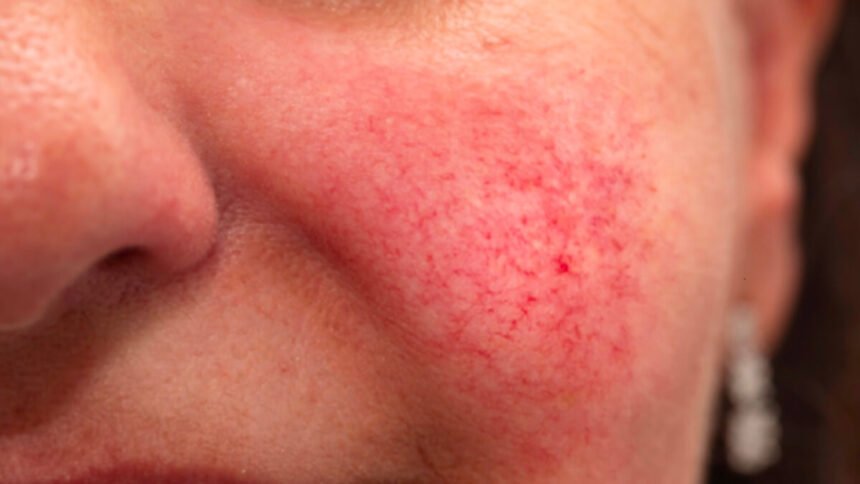Red moles, also known as cherry angiomas, are small growths that can appear on your skin. These little spots often raise eyebrows and questions. What exactly are they? https://comoquitarr.club/lunares-rojos/ Should you be worried about them? The good news is that red moles are generally harmless but understanding their nature can ease any concerns you might have.
In this post, we’ll dive deep into the world of red moles—exploring what causes them to appear, how to recognize if they pose any risks, and discovering both natural remedies and medical treatments available. Plus, we’ll share some handy tips on prevention so you can keep your skin healthy. Let’s embark on this journey together!
Understanding Red Moles: What are They?
Red moles, or cherry angiomas, are benign skin growths that vary in size and color. Typically bright red or dark purple, they form due to an overgrowth of blood vessels. You might notice them appearing on various parts of your body as you age.
These moles can be flat or raised and usually feel smooth to the touch. They often appear in clusters but can also stand alone. While not uncommon, their sudden emergence may catch your attention.
Though they tend to pop up more frequently after the age of 30, anyone can develop them regardless of skin type or tone. Their appearance is generally harmless; however, understanding what they are helps demystify any concerns surrounding these little spots on our skin.
Causes of Red Moles
Red moles, also known as cherry angiomas, can appear for several reasons. Genetics often plays a significant role. If your family has a history of these benign growths, you might be more likely to develop them.
Hormonal changes can also trigger their formation. Many people notice an increase in red moles during pregnancy or other hormonal shifts.
Sun exposure is another factor that may contribute to their development. While they are not directly caused by UV rays, skin damage from sun exposure could influence their appearance over time.
Age is yet another element to consider. The likelihood of developing red moles increases as we grow older, making them more common in middle-aged and elderly individuals.
Certain medical conditions or medications can lead to the emergence of these moles on your skin. It’s essential to keep track of any changes and consult with a healthcare professional if needed.
Are They Harmful?
Red moles, often referred to as cherry angiomas, are typically harmless. They are benign growths composed of small blood vessels that cluster together. Most people develop these moles as they age.
While they usually don’t pose any health risks, changes in their appearance can signal a need for attention. If a red mole begins to grow rapidly or changes color, it’s wise to consult a dermatologist. This is especially critical if the mole becomes painful or starts bleeding.
Although rare, some individuals may be allergic to certain skin products that could irritate red moles. Monitoring your skin’s reactions can help you avoid unnecessary discomfort.
In general, maintaining awareness of your skin is key. Regular self-exams play an essential role in identifying any new developments promptly and ensuring peace of mind regarding your health.
Natural Remedies for Red Moles
Natural remedies can offer gentle solutions for those looking to manage red moles. One popular approach is the use of apple cider vinegar. Its acetic acid content may help lighten these spots over time. Apply a small amount with a cotton ball and leave it on for about 30 minutes.
Another option is tea tree oil, known for its antimicrobial properties. Dilute it with a carrier oil before applying directly to the mole. This could promote skin healing.
Aloe vera gel also holds promise due to its soothing qualities. Regular application may reduce irritation and improve overall skin health around the affected area.
Incorporating vitamin E can nourish your skin from within. Consider using supplements or topical applications to enhance cellular repair and potentially diminish red moles’ appearance over time.
Medical Treatments for Red Moles
When it comes to medical treatments for red moles, dermatologists often recommend a few effective options. Laser therapy is one of the most popular choices. This method targets the mole with focused light beams, breaking down its pigment without damaging surrounding skin.
Another option includes cryotherapy, which involves freezing the mole using liquid nitrogen. This treatment causes the mole to fall off after a short period.
For those who prefer surgical methods, excision might be suggested. The doctor removes the mole entirely, stitching up the area afterward to promote proper healing.
Topical treatments can also play a role in reducing their appearance. Prescription creams may help lighten pigmentation over time.
Always consult with a healthcare professional before deciding on any treatment plan to ensure it’s suitable for your specific situation and skin type.
Prevention Tips
To keep red moles at bay, sun protection is key. Always apply a broad-spectrum sunscreen with at least SPF 30. Reapply every two hours when outdoors.
Regular skin checks can help you spot changes early on. Familiarize yourself with your skin and note any new growths or alterations in existing moles.
Maintain a healthy lifestyle to support your skin’s natural defenses. A balanced diet rich in antioxidants and hydration plays an essential role.
Avoid tight clothing that may irritate the skin, leading to inflammation around existing moles.
Limit exposure to environmental toxins where possible. This includes avoiding chemical-laden products that could impact your skin health over time. Being mindful of these practices can significantly reduce the risk of developing unwanted red moles.
Conclusion
Red moles, while often harmless, can evoke concern for many. Understanding their characteristics and causes is essential in demystifying them. Although they may not pose significant health risks, awareness of any changes is crucial.
There are various natural remedies available that can help manage their appearance. Additionally, medical treatments offer effective solutions for those seeking more immediate results or reassurance.
Preventive measures play a key role as well. https://comoquitarr.club/lunares-rojos/ Simple lifestyle adjustments can contribute to skin health and reduce the likelihood of new red moles appearing.
Taking charge of your skin’s well-being empowers you to make informed decisions regarding your body. Embracing knowledge about red moles equips you with the tools needed to maintain healthy skin moving forward.







